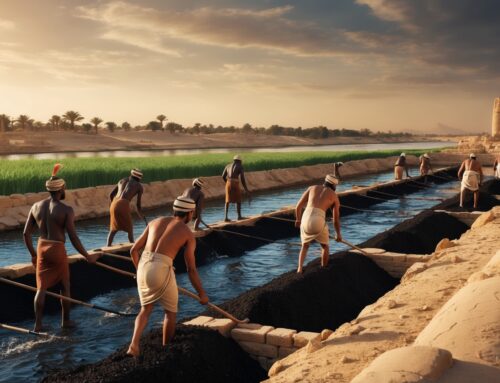Measuring soil moisture isn’t just about sticking a sensor in the ground and hoping for the best. There’s a science to it, and when done right, it can mean the difference between a thriving, productive crop and one that’s struggling to survive. In this post, we’re going to talk about the dos and don’ts of measuring soil moisture, helping you make the most of your irrigation practices and keep your crops healthy.
Do: Understand the Type of Sensor You’re Using
There are several different types of soil moisture sensors, each with its strengths and limitations. Capacitance sensors, like Terrestream’s Irrigauge, use an electrical field to measure the dielectric constant of the soil, providing accurate moisture readings. Resistance sensors, on the other hand, measure electrical resistance between two points, which changes with soil moisture.
Each sensor type behaves differently under varying conditions, and knowing how your sensor works is crucial. Capacitance sensors tend to be more reliable across different soil types, while resistance sensors can be less consistent in fluctuating temperatures or soil salinity. Understanding the nuances of your sensor will help you get the most accurate data possible.
Don’t: Ignore Soil Temperature
Temperature has a big impact on soil moisture levels and the accuracy of your readings. Soil temperature affects how water moves through the soil and how easily plants can absorb it. Hot temperatures cause moisture to evaporate more quickly, while cooler temperatures retain water longer. Terrestream’s Irrigauge not only measures soil moisture but also monitors soil temperature to give you a full picture of what’s going on underground.
Ignoring soil temperature could lead to inaccurate readings and improper irrigation. If you’re measuring soil moisture in the middle of a hot day, you might think your soil is too dry, when in reality, it’s just the surface that’s losing moisture due to heat. Measure in the early morning or late evening for the most reliable readings, and always take temperature into consideration.
Do: Calibrate Your Sensors Properly
Calibration is key to getting accurate soil moisture readings. Different soil types have different characteristics, and a sensor that works perfectly in one type of soil may be less accurate in another. Calibration involves adjusting the sensor to match the specific conditions of your soil.
At Terrestream, we’ve calibrated our Irrigauge sensors for twelve major soil types, and we even offer custom calibration services to match the unique soil on your farm. Proper calibration means more reliable data and better irrigation decisions—helping you conserve water, avoid overwatering, and optimize plant growth.
Don’t: Overwater Based on Surface Moisture
A common mistake is to make irrigation decisions based on the moisture level of the soil surface. The top inch of soil can dry out quickly due to evaporation, especially on hot days, but that doesn’t mean your plants are thirsty. It’s the deeper moisture that really matters, and that’s where sensors like the Irrigauge come in handy.
By measuring soil moisture at different depths—12, 24, 36, or even 48 inches—you get a clearer picture of what’s happening in the root zone. Overwatering based on surface moisture can lead to waterlogged roots, nutrient leaching, and increased costs. Instead, rely on data from different soil depths to ensure you’re providing just the right amount of water.
Do: Measure at Consistent Times
Consistency is important when it comes to measuring soil moisture. Just like with any data collection, measuring at consistent times of day helps you compare apples to apples. Soil moisture fluctuates throughout the day due to weather, plant uptake, and evaporation, so measuring at random times can give you misleading results.
Aim to take readings either early in the morning or late in the evening when temperatures are more stable. This way, you get a clearer view of what your plants are experiencing without the influence of midday heat skewing your results.
Don’t: Forget About Soil Type
Different soils hold water differently, and your irrigation practices need to account for that. Sandy soils drain quickly and have a low field capacity, meaning they need smaller, more frequent waterings. Clay soils, on the other hand, retain water longer but can easily become waterlogged if overwatered.
Terrestream’s Irrigauge sensors have been scientifically calibrated for all twelve major soil types, so they can provide accurate data regardless of your soil composition. Understanding your soil type and how it affects water retention will help you fine-tune your irrigation schedule for optimal results.
Conclusion: Precision is the Key to Better Crops
The dos and don’ts of measuring soil moisture might seem simple, but they make a big difference in how well your crops grow and how efficiently you use water. With the right tools, like Terrestream’s Irrigauge sensors, you can take the guesswork out of irrigation and make informed decisions that help your farm thrive.
Understanding your sensor, calibrating it properly, measuring at consistent times, and factoring in soil temperature and type are all part of a comprehensive approach to soil moisture management. When you know exactly what’s going on below the surface, you can make better choices above it—leading to healthier crops, lower costs, and a more productive farm.
Ready to bring precision to your irrigation? Check out Terrestream’s Irrigauge, FieldLink, and FieldHub to see how our system can help you master the dos and don’ts of soil moisture measurement.





